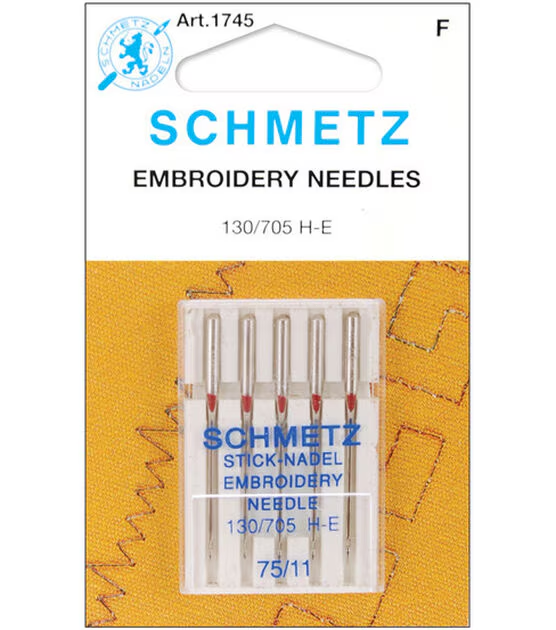Machine embroidery is a rewarding hobby and a useful skill that combines creativity and technical precision. As a beginner, it can seem overwhelming with the myriad of tools, techniques, and patterns available. This blog will guide you through essential tips and tricks to help you master machine embroidery and elevate your projects to professional standards. Additionally, we’ll introduce you to Absolute Digitizing, a premier service provider for all your digitizing needs, ensuring your designs are impeccable from the start.
Mastering Basic Techniques
Practicing with Simple Designs
Keeping Your Workspace Organized
Seeking Professional Help When Needed
Customizing Your Designs
Managing Large Projects
Absolute Digitizing: Your Partner in Professional Embroidery
Caring for Your Finished Projects
Conclusion
Bonus Tips

1. Understanding Your Embroidery Machine
The first step to mastering machine embroidery is to thoroughly understand your machine. Here are some key points to focus on:
- Read the User Manual: It may seem tedious, but the manual is your best friend. It contains all the information you need to operate your machine properly and troubleshoot common issues.
- Familiarize with Features: Spend time learning about the different features of your embroidery machine, such as thread tension, speed control, and stitch types.
- Regular Maintenance: Keep your machine clean and well-oiled to ensure it runs smoothly. Regular maintenance can prevent many common issues.
2. Choosing the Right Materials
The materials you choose can make or break your embroidery project. Here are some tips for selecting the right materials:
- Fabric: Start with stable fabrics like cotton or linen. Avoid stretchy or very delicate fabrics until you gain more experience.
- Stabilizers: Stabilizers are crucial for preventing fabric puckering and ensuring clean stitches. There are different types (tear-away, cut-away, water-soluble) for different projects.
- Threads: Use high-quality embroidery threads. Polyester threads are durable and vibrant, while rayon threads offer a beautiful sheen.
3. Mastering Basic Techniques
Before diving into complex designs, master these basic techniques:
- Hooping: Proper hooping is essential for keeping your fabric taut and ensuring precise stitches. Practice getting the fabric tight in the hoop without stretching it.
- Threading the Machine: Ensure your machine is threaded correctly. Incorrect threading can cause thread breaks and poor stitch quality.
- Starting and Stopping: Learn how to start and stop your machine smoothly to avoid uneven stitches and thread nests.

4. Using Embroidery Software
Embroidery software is an invaluable tool for creating and editing designs. For beginners, user-friendly software like Hatch Embroidery or Brother PE-Design can be a great start. However, for professional-quality designs, consider using Absolute Digitizing’s services. Their team of experts can convert any image into a perfect embroidery file, ensuring your projects look stunning.
5. Practicing with Simple Designs
Begin with simple designs to build your confidence and skills. As you progress, you can tackle more intricate patterns. Practice makes perfect in machine embroidery.
6. Learning from Mistakes
Don’t be discouraged by mistakes. They are a part of the learning process. Analyze what went wrong and how you can improve next time. Keep a notebook to track your progress and note important lessons.
7. Joining a Community
Joining an embroidery community, either online or in-person, can provide valuable support and inspiration. Platforms like Reddit, Facebook groups, or local craft clubs are great places to share your work, ask for advice, and learn from others.
8. Keeping Your Workspace Organized
An organized workspace can significantly improve your efficiency and creativity. Keep your threads, fabrics, and tools neatly arranged. Invest in storage solutions that keep everything easily accessible.

9. Experimenting with Different Techniques
Once you’re comfortable with the basics, experiment with different techniques to add variety to your projects:
- Appliqué: This involves stitching a fabric piece onto another fabric, creating layered designs.
- Monogramming: Personalize items with initials or names.
- 3D Embroidery: Use foam to create raised designs for a unique texture.
10. Seeking Professional Help When Needed
Even as you become more skilled, there may be times when you need professional help. Absolute Digitizing offers expert digitizing services starting at just $1 per 1000 stitches. They ensure your designs are perfectly digitized, saving you time and frustration.
Absolute Digitizing Services
At Absolute Digitizing, we offer a range of services tailored to meet your embroidery needs:
- High-Quality Digitizing: Our team converts any design into a flawless embroidery file, ensuring perfect stitch quality.
- Affordable Pricing: Starting at $1 per 1000 stitches, our services are budget-friendly.
- Quick Turnaround: We understand the importance of time, which is why we offer fast turnaround times without compromising quality.
- Experienced Team: Our digitizers have years of experience and are well-versed in the latest techniques and software.
11. Exploring Advanced Techniques
As you gain confidence, exploring advanced techniques can add a new dimension to your embroidery projects:
- In-the-Hoop Projects: These are designs where multiple steps are completed in the embroidery hoop, perfect for creating items like bags or ornaments.
- Free-Motion Embroidery: This technique gives you more control over your designs by allowing you to move the fabric freely under the needle.
- Thread Painting: Also known as needle painting, this technique uses different thread colors to create a picture-like effect.
12. Customizing Your Designs
Customizing designs can make your projects unique and personal. Here are some ways to add a personal touch:
- Color Changes: Experiment with different thread colors to see how they change the look of a design.
- Adding Text: Personalize items with names, dates, or messages.
- Combining Designs: Merge multiple designs to create a new, original piece.

13. Managing Large Projects
Handling large embroidery projects can be challenging. Here are some tips to manage them effectively:
- Section Your Design: Break your design into smaller sections and embroider them one at a time.
- Use a Large Hoop: If your machine supports it, use a large hoop to accommodate bigger designs.
- Rehooping Techniques: Learn how to rehoop your fabric accurately to ensure your designs align perfectly.
14. Troubleshooting Common Issues
Even experienced embroiderers encounter problems. Here’s how to troubleshoot some common issues:
- Thread Breaks: Check for correct threading, appropriate tension, and a good-quality needle.
- Skipped Stitches: Ensure the needle is not damaged and the fabric is hooped tightly.
- Puckering: Use the correct stabilizer and hoop the fabric properly.
15. Enhancing Efficiency
Improving your efficiency can save time and effort. Here are some tips to streamline your process:
- Pre-Wound Bobbins: These can save time and ensure consistent tension.
- Thread Stands: Use thread stands for smoother thread feeding.
- Batch Processing: Work on multiple items simultaneously by batching your tasks (e.g., hooping all fabrics first).
Absolute Digitizing: Your Partner in Professional Embroidery
To ensure your designs are of the highest quality, consider partnering with a professional digitizing service like Absolute Digitizing. Here’s how their services can benefit you:
- Precision and Detail: Absolute Digitizing provides meticulous attention to detail, ensuring your designs come out perfectly.
- Cost-Effective Solutions: With prices starting at just $1 per 1000 stitches, their services are affordable for both hobbyists and businesses.
- Speed and Reliability: Quick turnaround times mean you can keep your projects on schedule without sacrificing quality.
- Expertise: Their team of experienced digitizers is adept at handling complex designs and delivering superior results.

16. Resources and Learning
Continuously improving your skills is crucial. Here are some resources to help you learn more about machine embroidery:
- Books and Magazines: Subscribe to embroidery magazines or invest in books that cover various techniques and tips.
- Online Courses: Platforms like Craftsy and Udemy offer comprehensive courses on machine embroidery.
- YouTube Tutorials: There are countless tutorials available that can guide you through specific projects and techniques.
17. Caring for Your Finished Projects
Proper care of your embroidered items can ensure they last longer and maintain their beauty:
- Washing Instructions: Use mild detergents and avoid bleach. Hand wash if possible.
- Drying Tips: Air dry or use a low-heat setting in the dryer to prevent damage.
- Ironing: If ironing is needed, do so on the reverse side and use a pressing cloth to protect the stitches.
18. Embracing Creativity
Finally, don’t forget to have fun and let your creativity flow. Machine embroidery is an art form, and your unique touch can make your projects stand out. Experiment with different styles, try new patterns, and most importantly, enjoy the process.
Conclusion
Mastering machine embroidery takes time and practice, but with the right tips and resources, you can create stunning projects. Remember to start with the basics, choose the right materials, and don’t be afraid to make mistakes. Utilizing professional services like Absolute Digitizing can also elevate your work to a professional level. Happy embroidering!

Bonus Tips
- Invest in Quality Needles: Using the right needle for your fabric and thread type can prevent many common issues.
- Test Your Designs: Always do a test run on scrap fabric to ensure your design looks perfect before stitching it on the final piece.
- Learn to Troubleshoot: Familiarize yourself with common problems like thread breaks, skipped

